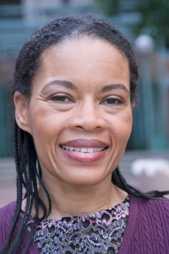How Cancer Registries Work
Have you ever wondered, “How do we know what causes cancer?” or “Who is most likely to get cancer and why?” Cancer registries help answer these important questions.
What Is a Cancer Registry?
A cancer registry collects detailed information about cancer patients and the treatments they receive, and stores it in a computer. They can then search this information to answer questions like—
- Are more or fewer people getting colon cancer this year compared to last year?
- Is there a certain area of the state where women are finding out they have breast cancer at a late stage, when it’s harder to treat?
- What groups of people are most likely to get skin cancer?
The cancer registry shares the answers to these questions with other groups like the state comprehensive cancer control coalition, which try to find out what can be done. They may find that some people aren’t getting the cancer screening tests they need, or they’re making choices that make them more likely to get cancer, or something in their home or workplace is causing cancer. The groups try to fix the problem, and the cancer registry gives them new information so they know if their solution works.
Examples of Cancer Registries in Action
North Dakota: Is a Cancer Cluster Real?
In 2013, a concerned citizen in a small town in rural North Dakota asked the North Dakota Cancer Registry why so many people seemed to be getting cancer there. Scientists used their knowledge of diseases, the environment, lifestyle factors, and statistics to investigate this possible cancer cluster (a higher than expected number of cancer cases among a group of people or in a geographic area). The registry was able to ease the county’s concerns. After review, there was no link between this rural community and the cancer.
Louisiana: Finding Benign and Borderline Brain Tumors
Many small hospitals lack the resources to look for benign (non-cancerous) and borderline brain tumors on radiology reports. In 2011, the Louisiana Tumor Registry began working with the state Department of Health and Hospitals to make sure they received all of the information they needed about brain tumors. That year, the registry found 161 brain tumors that had been missed. They continue to check the data every year.
Georgia: Obesity-Related Cancers Are On the Rise
Being overweight can raise your chance of getting cancers of the breast, colon, endometrium, esophagus, gallbladder, and kidney. In recent years, the Georgia Comprehensive Cancer Registry found that the rates of obesity-related cancers are increasing in Georgia. Based on this finding, three offices in the Georgia Department of Public Health added nutrition, physical activity, and cancer prevention and control goals to their five-year strategic plans.

How Cancer Registries Work
To explain how registries work, we’ll use a simple example.
Jennifer, a 55-year-old secretary, gets a routine mammogram, which shows she has a tumor about the size of a large pea in her left breast. Jennifer gets an operation at a hospital to remove the tumor, and afterward she gets chemotherapy treatments to make sure the cancer is all gone.
Before the operation, Jennifer gave the hospital some information about herself, including her name, address, age, race and ethnicity, and health insurance company. Jennifer's doctors wrote down information about the tumor, like where it was located and how big it was, and what they did to treat it.
The hospital has its own cancer registry. A specially trained person called a cancer registrar looks at Jennifer’s medical record and puts the information about her, her cancer, and her treatment into a computer using special codes. The cancer registrar also makes sure no important information is missing; if it is, he or she asks Jennifer's doctors or other hospital staff for the information. Once a year, the hospital registry sends this information to the central cancer registry in its state.
The state central cancer registry does its best to get information about every cancer case in the state. It reviews the information to make sure it’s right and that no information is missing. Once a year, most state central cancer registries send information to CDC’s National Program of Cancer Registries (NPCR), and some state and city cancer registries send information to the National Cancer Institute’s Surveillance, Epidemiology, and End Results (SEER) program. The central cancer registries don't send any information that could identify a specific patient, like his or her name, street address, or Social Security number. The NPCR and SEER check the information again, and then the information is published every year in the United States Cancer Statistics: Incidence and Mortality Web-based Report (USCS).
How USCS Data Are Used
Scientists all over the world use USCS data in studies about cancer. Here are some examples of research by CDC scientists that used USCS data—
- Gallbladder Cancer Incidence and Death Rates: Little information was available about gallbladder cancer rates in the United States, so CDC researchers figured gallbladder cancer rates by sex, racial and ethnic group, age group, U.S. Census region, state, county-level poverty, and percent of county population not born in the United States.
- Cervical Cancer Rates Among Young Women in the United States: This study used NPCR and SEER data to describe cervical cancer rates among women younger than 40 years old.
- Cancer Incidence in American Indians and Alaska Natives: These reports found that American Indians and Alaska Natives are more likely than non-Hispanic white people to get cancers of the kidney, stomach, cervix uteri, liver, and gallbladder, and less likely to get other kinds of cancer.
- Page last reviewed: October 19, 2015
- Page last updated: October 19, 2015
- Content source:
- Maintained By:


 ShareCompartir
ShareCompartir